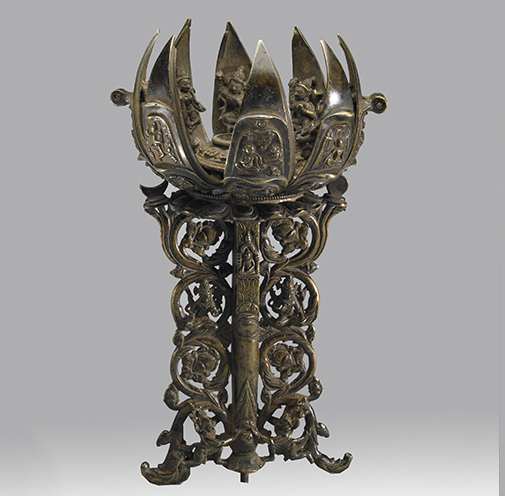
Theme: Wisdom
About the Meditation
Meditation session led by Sharon Salzberg.
The guided meditation begins at 14:52.
For centuries Himalayan practitioners have used meditation to quiet the mind, open the heart, calm the nervous system, and increase focus. Now Western scientists, business leaders, and the secular world have embraced meditation as a vital tool for brain health.
Whether you’re a beginner, a dabbler, or a skilled meditator seeking the company of others, join expert teachers in a forty-five-minute weekly program designed to fit into your lunch break. Each session will be inspired by a different work of art from the Rubin Museum’s collection and will include an opening talk, a twenty-minute meditation session, and a closing discussion.
This program is supported with thanks to our presenting partners Sharon Salzberg, the Interdependence Project and Parabola Magazine.


Related Artwork

Lotus mandalas count among the most fascinating objects of Esoteric Buddhist art. These three-dimensional representations of deity palaces typically feature a deity at the center of the flower, which stands atop a tall stem, with the deity’s retinue placed on hinged petals around him or her. This sculpture’s mechanical hinges allow for the petals to close around the central deity, so the sculpture resembles a flower bud. Housing the deities in a lotus, a symbol of purity, serves as an ideal metaphor for the perfection of their palatial habitat as envisioned in meditative practice.
The lotus mandala form was probably invented in northeastern India. This mandala exhibits features typical for that region, including the shape of the lotus petals, the scrollwork at the sides of the stem, and the copper alloy used. At the center of the blossom is the divine couple Hevajra and Nairatmya. They are surrounded by eight yoginis dancing on the petals. On the outside of the petals are eight cemetery grounds, each presided over by a highly accomplished Tantric Buddhist adept, or mahasiddha.
About the Speaker

Sharon Salzberg, cofounder of the Insight Meditation Society in Barre, Massachusetts, has guided meditation retreats worldwide since 1974. Sharon’s latest book is Real Love: The Art of Mindful Connection. She is a weekly columnist for On Being, a regular contributor to the Huffington Post, and the author of several other books including the New York Times bestseller Real Happiness: The Power of Meditation, Faith: Trusting Your Own Deepest Experience, and Lovingkindness: The Revolutionary Art of Happiness. Sharon has been a regular participant in many onstage conversations at the Rubin.
